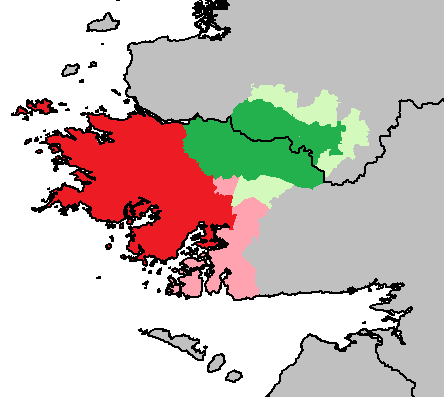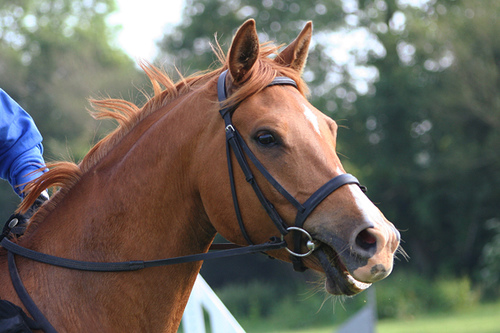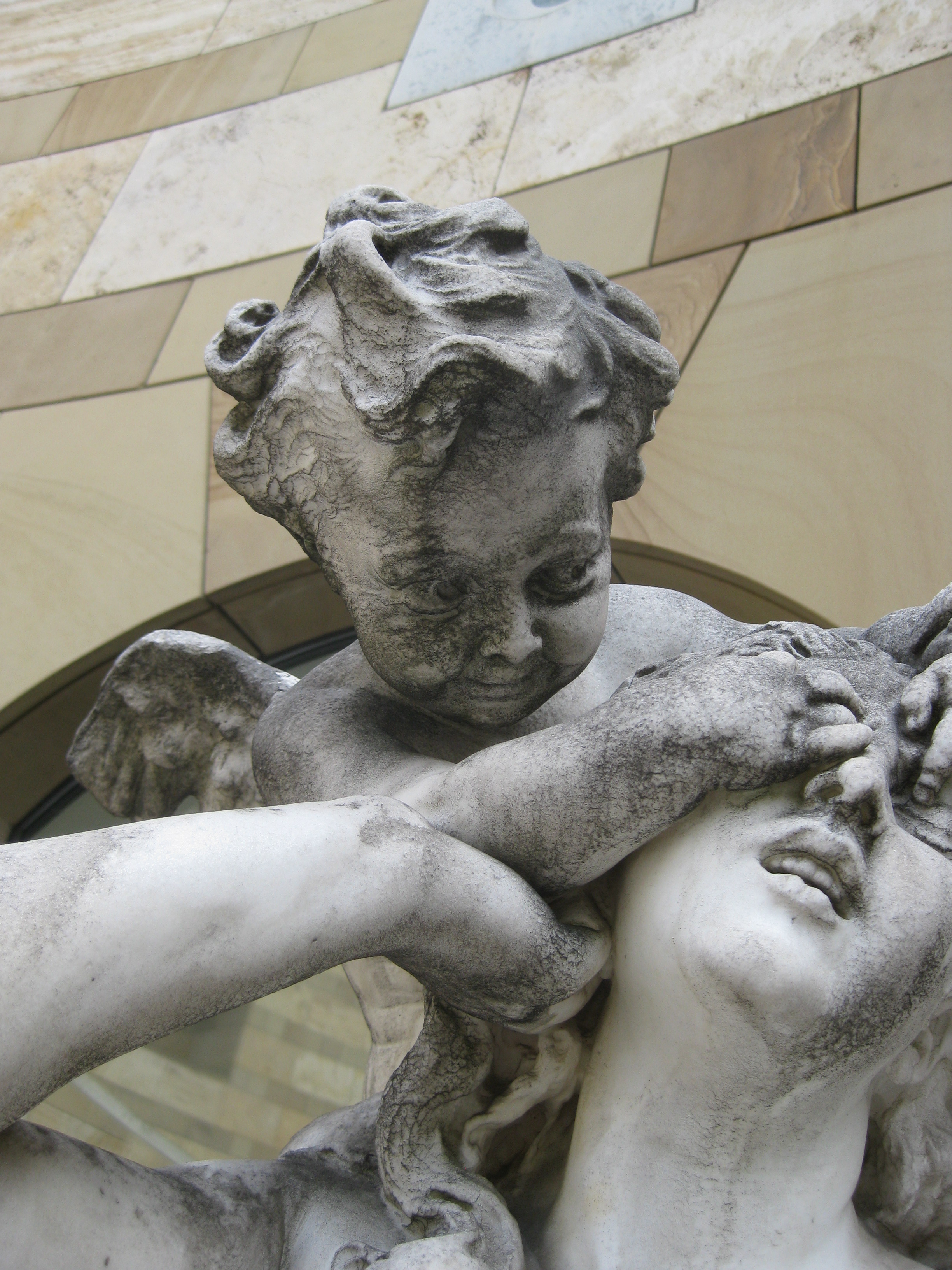|
Irish Hobby
The Irish Hobby is an extinct breed of horse developed in Ireland prior to the 13th century. The breed provided foundation bloodlines for several modern horse breeds, including breeds as diverse as the Connemara pony and the Irish Draught. Palfreys were known as ''haubini'' in France, which eventually became ''hobbeye''. These animals eventually found their way to Ireland where the Irish Hobby developed. The breed was mentioned in 1375 by the poet John Barbour, who called them ''hobynis'' in his poem, ''The Bruce.'' He also mentioned them in his work ''Reliquiae Antiquae'', noting their speed. And one amang, an Iyrysch man,Uppone his hoby swyftly ran... Mares of Irish Hobby breeding may have been among the native horse breeds of Ireland that provided foundation stock for the Thoroughbred. There is a great deal of evidence that the Irish Hobby was imported to England and Scotland for various activities, including racing, "...they be so light and swift." Horses were trad ... [...More Info...] [...Related Items...] OR: [Wikipedia] [Google] [Baidu] |
Connemara Stallion
Connemara (; )( ga, Conamara ) is a region on the Atlantic coast of western County Galway, in the west of Ireland. The area has a strong association with traditional Irish culture and contains much of the Connacht Irish-speaking Gaeltacht, which is a key part of the identity of the region and is the largest Gaeltacht in the country. Historically, Connemara was part of the territory of Iar Connacht (West Connacht). Geographically, it has many mountains (notably the Twelve Bens), peninsulas, coves, islands and small lakes. Connemara National Park is in the northwest. It is mostly rural and its largest settlement is Clifden. Etymology "Connemara" derives from the tribal name , which designated a branch of the , an early tribal grouping that had a number of branches located in different parts of . Since this particular branch of the lived by the sea, they became known as the (sea in Irish is , genitive , hence "of the sea"). Definition One common definition of the area is ... [...More Info...] [...Related Items...] OR: [Wikipedia] [Google] [Baidu] |
Hobelar
Hobelars were a type of light cavalry, or mounted infantry, used in Western Europe during the Middle Ages for skirmishing. They originated in 13th century Ireland, and generally rode hobbies, a type of light and agile horse. Origins According to James Lydon, "There can be little doubt that the hobelar as a type of soldier originated in Ireland ... between the fully armoured knight on the 'equus coopertus' and the lightly armoured archer on the 'equus discoopertus' there was an intermediate stage. This intermediary ... was provided by the hobelar." He further states that hobelars were highly mobile, and excelled in scouting, reconnaissance and patrols ... eminently suited to the terrain in which military operations had to be conducted in Ireland. However superior the Norman knight might be upon the field of battle, the bogs and woods of Ireland gave little opportunity for the mail-clad charge. Thus there evolved in Ireland, as a habitual part of every Anglo-Norman force, a typ ... [...More Info...] [...Related Items...] OR: [Wikipedia] [Google] [Baidu] |
Alfred P
Alfred may refer to: Arts and entertainment *'' Alfred J. Kwak'', Dutch-German-Japanese anime television series * ''Alfred'' (Arne opera), a 1740 masque by Thomas Arne * ''Alfred'' (Dvořák), an 1870 opera by Antonín Dvořák *"Alfred (Interlude)" and "Alfred (Outro)", songs by Eminem from the 2020 album '' Music to Be Murdered By'' Business and organisations * Alfred, a radio station in Shaftesbury, England * Alfred Music, an American music publisher *Alfred University, New York, U.S. * The Alfred Hospital, a hospital in Melbourne, Australia People * Alfred (name) includes a list of people and fictional characters called Alfred * Alfred the Great (848/49 – 899), or Alfred I, a king of the West Saxons and of the Anglo-Saxons Places Antarctica * Mount Alfred (Antarctica) Australia * Alfredtown, New South Wales * County of Alfred The County of Alfred is one of the 49 cadastral counties of South Australia on the south banks of the River Murray. It was proclaimed by Go ... [...More Info...] [...Related Items...] OR: [Wikipedia] [Google] [Baidu] |
Francis John Byrne
Francis John Byrne (1934 – 30 December 2017) was an Irish historian. Born in Shanghai where his father, a Dundalk man, captained a ship on the Yellow River, Byrne was evacuated with his mother to Australia on the outbreak of World War II. After the war, his mother returned to Ireland, where his father, who had survived internment in Japanese hands, returned to take up work as a harbour master. Byrne attended Blackrock College in County Dublin where he learned Latin and Greek, to add to the Chinese he had learned in his Shanghai childhood. He studied Early Irish History at University College Dublin where he excelled, graduating with first class honours. He studied Paleography and Medieval Latin in Germany, and then lectured on Celtic languages in Sweden, before returning to University College in 1964 to take up a professorship. Byrne's best known work is his ''Irish Kings and High-Kings'' (1973). He was joint editor of the Royal Irish Academy's ''New History of Ireland' ... [...More Info...] [...Related Items...] OR: [Wikipedia] [Google] [Baidu] |
Barry Raftery
Barry Raftery (16 August 1944 – 22 August 2010) was an Irish archaeologist and academic. He is best known for his pioneering work in wetland archaeology and Iron Age hillforts in Ireland. He was Professor of Celtic Archaeology in University College Dublin (UCD) for more than thirty years, and served as chair of the Department of Celtic Archeology at UCD from 1996 to his retirement in 2007. Early life and education Barry Joseph Raftery was born in Dublin, Ireland on 16 August 1944. He was the son of an Irish father and German mother, Joseph and Lotte Raftery. His father, Joseph, was an archaeologist who specialized in prehistoric Ireland and was keeper of Irish antiquities and Director of the National Museum of Ireland during his long career. Barry Raftery developed an interest in archaeology at the age of ten, after spending two summers working with his father in the excavations at Lough Gara. Raftery attended Belvedere College secondary school in Dublin. He studied arch ... [...More Info...] [...Related Items...] OR: [Wikipedia] [Google] [Baidu] |
Horsebit
The bit is an item of a horse's tack. It usually refers to the assembly of components that contacts and controls the horse's mouth, and includes the shanks, rings, cheekpads and mullen, all described here below, but it also sometimes simply refers to the ''mullen'', the piece that fits inside the horse's mouth. The mullen extends across the horse's mouth and rests on the ''bars'', the region between the incisors and molars where there are no teeth. The bit is located on the horse's head by the , and which has itself several components to allow the most comfortable adjustment of bit location and control. The bit, bridle and reins function together to give control of the horse's head to the rider. The bit applies pressure to the horse's mouth, and reinforces the other control signals from the rider's legs and weight distribution. A well schooled horse needs little pressure on the bit from a skilled rider. Studies have indicated that soft, consistent bit contact between the ride ... [...More Info...] [...Related Items...] OR: [Wikipedia] [Google] [Baidu] |
Dacia
Dacia (, ; ) was the land inhabited by the Dacians, its core in Transylvania, stretching to the Danube in the south, the Black Sea in the east, and the Tisza in the west. The Carpathian Mountains were located in the middle of Dacia. It thus roughly corresponds to the present-day countries of Romania, as well as parts of Moldova, Bulgaria, Serbia, Hungary, Slovakia, and Ukraine. A Dacian Kingdom of variable size existed between 82 BC until the Roman conquest in AD 106, reaching its height under King Burebista. As a result of the two wars with Emperor Trajan, the population was dispersed and the central city, Sarmizegetusa Regia, was destroyed by the Romans, but was rebuilt by the latter to serve as the capital of the Roman province of Dacia. The Free Dacians, living the territory of modern-day Northern Romania disappeared with the start of the Migration Period. Nomenclature The Dacians are first mentioned in the writings of the Ancient Greeks, in Herodotus (''Histo ... [...More Info...] [...Related Items...] OR: [Wikipedia] [Google] [Baidu] |
Idiom
An idiom is a phrase or expression that typically presents a figurative, non-literal meaning attached to the phrase; but some phrases become figurative idioms while retaining the literal meaning of the phrase. Categorized as formulaic language, an idiom's figurative meaning is different from the literal meaning. Idioms occur frequently in all languages; in English alone there are an estimated twenty-five million idiomatic expressions. Derivations Many idiomatic expressions were meant literally in their original use, but sometimes the attribution of the literal meaning changed and the phrase itself grew away from its original roots—typically leading to a folk etymology. For instance, the phrase "spill the beans" (meaning to reveal a secret) is first attested in 1919, but has been said to originate from an ancient method of voting by depositing beans in jars, which could be spilled, prematurely revealing the results. Other idioms are deliberately figurative. For example, " brea ... [...More Info...] [...Related Items...] OR: [Wikipedia] [Google] [Baidu] |
Hobby Horse (other)
A hobby horse is a costume or character involved in traditional customs such as the morris dance and mummers' play. Hobby horse or hobbyhorse may also refer to: * Hobby horse (toy), a toy horse, consisting of a model of a horse's head attached to a stick * '' The Hobby Horse'', the magazine of the Century Guild of Artists from 1886 to 1892 * ''The Hobby Horse'' (film), a 1962 Australian television play * Irish Hobby, an extinct breed of horse * A 1972 band around Mary Hopkin * Dandy horse The dandy horse, a derogatory term for what was first called a Laufmaschine (in German), then a vélocipède or draisienne (in French and then English), and then a pedestrian curricle or hobby-horse, or swiftwalker, is a human-powered vehicle t ... or hobby horse, an early form of bicycle * Hobby horsing, a hobby and sport popularised in Finland * Hobby horse polo, a polo with a hobby horse {{disambiguation ... [...More Info...] [...Related Items...] OR: [Wikipedia] [Google] [Baidu] |
Ann Hyland
Ann Hyland is a writer and historian who specialises in equestrianism and the development of horses. She is also a consultant for the Oxford English Dictionary The ''Oxford English Dictionary'' (''OED'') is the first and foundational historical dictionary of the English language, published by Oxford University Press (OUP). It traces the historical development of the English language, providing a com ....StaffConsultants, advisers, and contributors Oxford English Dictionary Ann Hyland trains horses as well as being a freelance lecturer on equestrian topics.StaffAbout Ann Hyland Greenwood Publishing Select bibliography * ''Beginner's Guide to Western Riding'' (1971)World CatBooks by Ann Hyland World Cat * ''Foal to Five Years'' (1980) * ''The Endurance Horse'' (1988) * ''Riding Long Distance'' (1988) * ''Equus: The Horse in the Roman World'' (1990) * ''The Appaloosa'' (1990) * ''Training the Roman Cavalry'' (1993) * ''The Medieval Warhorse: From Byzantium to the Crusades' ... [...More Info...] [...Related Items...] OR: [Wikipedia] [Google] [Baidu] |
Guerrilla Warfare
Guerrilla warfare is a form of irregular warfare in which small groups of combatants, such as paramilitary personnel, armed civilians, or irregulars, use military tactics including ambushes, sabotage, raids, petty warfare, hit-and-run tactics, and mobility, to fight a larger and less-mobile traditional military. Although the term "guerrilla warfare" was coined in the context of the Peninsular War in the 19th century, the tactical methods of guerrilla warfare have long been in use. In the 6th century BC, Sun Tzu proposed the use of guerrilla-style tactics in '' The Art of War''. The 3rd century BC Roman general Quintus Fabius Maximus Verrucosus is also credited with inventing many of the tactics of guerrilla warfare through what is today called the Fabian strategy. Guerrilla warfare has been used by various factions throughout history and is particularly associated with revolutionary movements and popular resistance against invading or occupying armies. Guerrilla ... [...More Info...] [...Related Items...] OR: [Wikipedia] [Google] [Baidu] |
Robert I Of Scotland
Robert I (11 July 1274 – 7 June 1329), popularly known as Robert the Bruce (Scottish Gaelic: ''Raibeart an Bruis''), was King of Scots from 1306 to his death in 1329. One of the most renowned warriors of his generation, Robert eventually led Scotland during the First War of Scottish Independence against England. He fought successfully during his reign to regain Scotland's place as an independent kingdom and is now revered in Scotland as a national hero. Robert was a fourth great-grandson of King David I, and his grandfather, Robert de Brus, 5th Lord of Annandale, was one of the claimants to the Scottish throne during the " Great Cause". As Earl of Carrick, Robert the Bruce supported his family's claim to the Scottish throne and took part in William Wallace's revolt against Edward I of England. Appointed in 1298 as a Guardian of Scotland alongside his chief rival for the throne, John Comyn of Badenoch, and William Lamberton, Bishop of St Andrews, Robert resigne ... [...More Info...] [...Related Items...] OR: [Wikipedia] [Google] [Baidu] |







